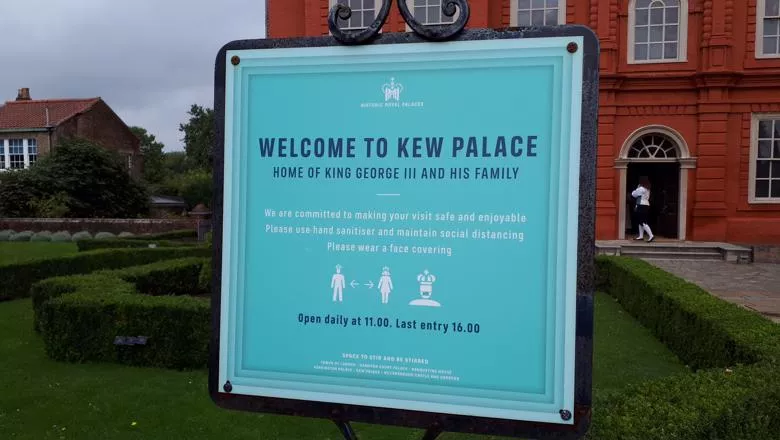24 November 2022
New study of Covid-19 public signs launched
A new research project, led by Dr Eva Ogiermann, examines how Covid-19 signage displayed in London businesses throughout the pandemic reproduces and adapts government instructions.

This new project looks at how Covid-19 signage displayed in London businesses throughout the pandemic reproduces and adapts government instructions.
Led by Dr Eva Ogiermann, this study will make an original contribution to research on risk communication by adopting a bottom-up approach and scrutinising the implementation of containment measures in specific local contexts.
Previous research on risk communication has mainly relied on surveys, a method that studies beliefs about and attitudes towards risk communication and adopts the top-down perspective of health officials and policy makers.
This project takes a novel, bottom-up approach to the study of risk communication by examining non-official Covid-19 signs and interpreting them in relation to the texts they reproduce.
Its main focus is on a pragmatic analysis of ca. 3,000 directive signs designed to regulate behaviour (such as “No mask - No entry”), displayed on the premises of London’s shops and hospitality venues, and photographed throughout the pandemic.
Dr Eva Ogiermann said: "As somebody who specialises in pragmatics, I was always interested in ‘how we do things with words’. And ever since I had bought my first digital camera, I’ve been taking pictures of public signs telling people what to do.
"The Covid-19 pandemic saw a drastic increase in public signage, with signs implementing containment measures constantly changing as the situation evolved. As there was nothing much to do during lockdowns, these signs turned out to be the biggest attraction during the daily walks I took in my neighbourhood, ultimately turning my sign collecting hobby into systematic research."

